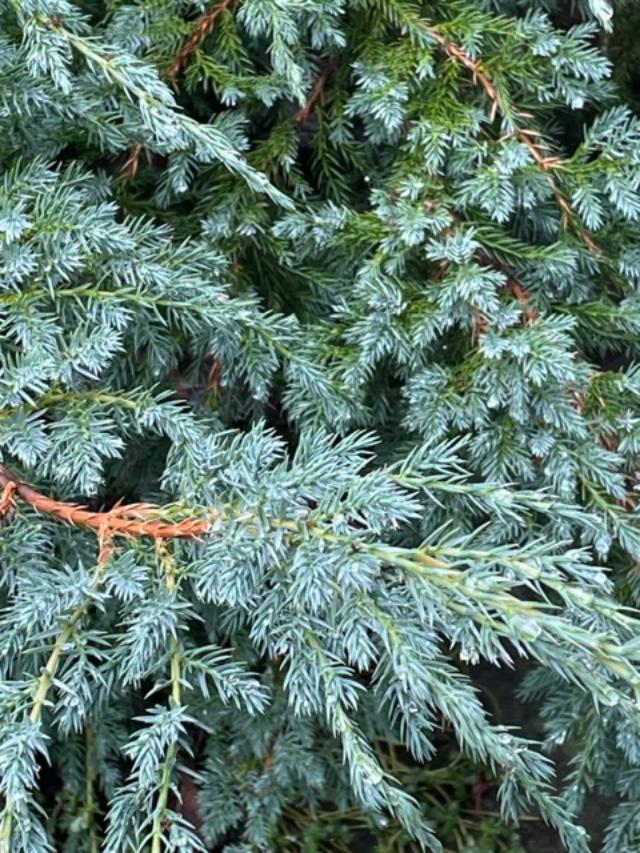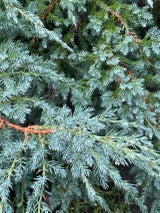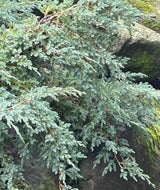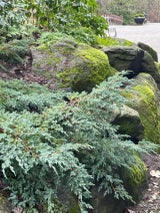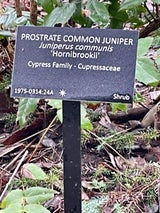- Plant IDs
- >
- ID By Type
- >
- Trees
- >
- Evergreen Trees
- >
- Conifers
- >
- Juniperus communis ‘Hornibrookii'
Juniperus communis ‘Hornibrookii'
Prostrate common juniper (Juniperus communis ‘Hornibrookii') is a spreading coniferous evergreen shrub with a slightly upward ascending habit, giving it a layered appearance. Here is how Hornibrook describes finding this plant in his book ‘Dwarf and Slow-growing Conifers’:
‘This is a form I found in Co. Galway, in the west of Ireland, among the normal bushy forms which the common juniper assumes in that country. It was a perfectly prostrate mat, flowing down over rocks and absolutely following their contours- it was then about a yard across and not more than 4 to 5 in. in height. I found it easy to propagate from cuttings, and it soon strayed into cultivation.’
Not far from the plaza in VanDusen, you can see Hornibrook’s discovery growing in our Native Cultivar Garden in bed 24 A. It was planted in 1975 and happily is following the above description. But its needles are also attractive. They are short and sharp with a silver-white band above and green underneath. The usual height of this shrub after 20 years is .5 m/1.5 ft and a spread of 2.5 m/8 ft. Our prostrate common juniper is behaving and still fits its rocky attractive slope. It does help that this juniper is not fussy. It grows in sun or partial shade in any kind of soil, as long as it is well-drained.
Common juniper (Juniperus communis) is the world’s most widely distributed tree, occurring in cold and mountainous regions of North America and Eurasia. Many people over time have benefited from its medicinal uses. For the interior First Nations in BC, it was an important medicine. Branches and berries were boiled to make a tea used for colds, heart trouble, and kidney problems. It was also used as a fumigant, deodorizer, or cleanser - especially in connection with sickness. Boughs were boiled and the strong pungent odour was thought to purify the house and protect the inhabitants.
The pictures of prostrate common juniper were taken in January. A good month to show off its subtle evergreen form flowing down the rocks.
Text and photos by Hughie Jones
